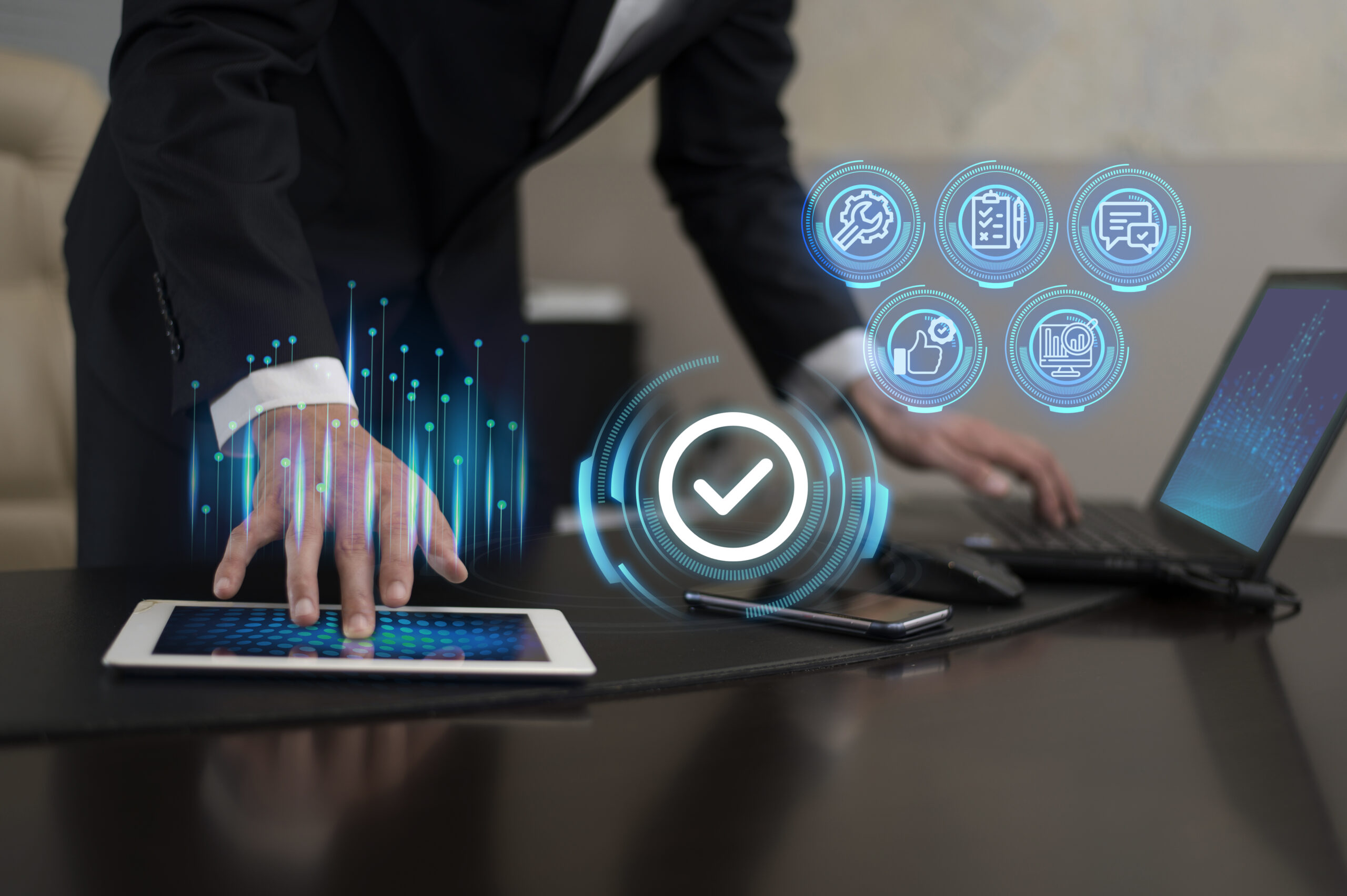Introduction
In modern-day dynamic business surroundings, performance is of the utmost importance. One area where efficiency can considerably affect operations is invoice processing. To help businesses improve their efficiency, invoice processing can now be automated with OCR Solutions.
The entire procedure of invoice processing includes receiving, verifying, and paying invoices from suppliers, customers, or vendors.
However, manual invoice processing is time-consuming, prone to errors, and requires a lot of human effort. This is where automation and OCR Solutions play an important role.
What Is Invoice Processing?
Invoice processing includes diverse steps, beginning from the receipt of an invoice to its final approval and payment.
Traditionally, this method involves manually entering data from invoices into accounting structures, verifying details against purchase orders or contracts, acquiring approvals, and initiating bills.
This manual technique is prone to many risks and mistakes, such as fact-entry errors, duplicate payments, and past-due payments.
Importance of Automation in Invoice Processing
Automation revolutionizes invoice processing by streamlining workflows, decreasing guided intervention, and minimizing errors.
Corporations can improve processing efficiency, accuracy, and compliance with regulatory standards by using OCR Solutions to automate repetitive tasks such as data entry, validation, and approval routing.
What is OCR?
Optical Character Recognition (OCR) is a transformative technology that converts various documents, such as PDF documents, scanned paper files, or photos containing text, into editable and searchable data. This technology plays an important role in streamlining business processing workflows throughout various industries.
At its core, OCR Solutions works by using sophisticated algorithms to investigate snapshots of text and translate them into system-readable textual content characters. The technique includes several steps:
- Image Preprocessing: The OCR software program preprocesses the entered photograph. Enhancing the quality and clarity of the photograph can significantly improve the accuracy of individual popularity assessment.
- Text Detection: The software identifies and locates textual content regions inside the photograph, distinguishing them from other graphical elements.
- Character Recognition: OCR algorithms analyze the textual content regions and discover individual characters, changing them into virtual text.
- Post-processing: The extracted text undergoes post-processing to resolve errors and improve accuracy, regularly utilizing context-based algorithms to enhance recognition effects.
Benefits of OCR
The Benefits of OCR in Document Processing are given below:
- Improved Efficiency: OCR solutions automate the extraction of text from documents, decreasing the need for manual information access and accelerating document processing speed.
- Enhanced Accuracy: By removing human errors related to guided information access, OCR solutions guarantee more accuracy in report processing, especially where more dependable information outputs are required.
- Increased Accessibility: OCR makes files searchable, allowing users to quickly discover and retrieve facts from huge volumes of digitized documents.
- Cost Savings: By streamlining report processing workflows and decreasing reliance on guided labour, OCR solutions help businesses by saving time and resources, mainly through cost efficiencies.
Challenges in Manual Invoice Processing
Manual invoice processing lead to several challenging situations for businesses across numerous industries because of its inherent inefficiencies.
Three of the main challenges related to manual invoice processing consist of time consumption, being prone to errors, and being human resource intensive.
Time Consumption
Manual invoice processing is a time-consuming task that requires an eye for detail. Employees ought to manually input information from invoices into accounting structures or spreadsheets, a technique that is both tiresome and labour-intensive.
Additionally, the manual managing of each bill, consists of verification, approval routing, and payment initiation, which delays the processing time.
Further, delays in invoice processing can also occur due to overdue payments, strained seller relationships, and consequences as a result of neglected time limits.
Prone To Errors
Human involvement in manual invoice processing introduces a higher risk of mistakes. From fact-entry errors to misinterpretations of records, numerous opportunities exist for inaccuracies.
Typos, transposed digits, or missing entries can result in discrepancies in economic data, replica bills, and reconciliation-demanding situations.
Moreover, manual tactics lack the built-in validation and error detection mechanisms that automatic structures offer, eliminating the danger of errors being ignored until they cause considerable risks.
Human Resource Intensive
Manual invoice processing involves treasured human resources that can be used in other high-value strategic responsibilities.
Organizations need to dedicate employees to handle various elements of the invoice processing workflow, including records entry, verification, reconciliation, and charge processing.
This reliance on human resources ties up employees who can contribute to higher-value decisions and also increases operational costs related to manual intervention.
Automating Invoice Processing with OCR Solutions
Automating invoice processing with OCR solutions offers several benefits for organizations looking to streamline their monetary workflows.
It is estimated that the need for invoice processing automation is on the rise with invoice processing software market expected to cross USD 4.6 billion by 2030 with a CAGR of around 8.5% from 2023 to 2030.
OCR features that are especially tailored for invoice extraction, play an important role in this automation technique. These capabilities consist of superior textual content recognition algorithms that are capable of accurately extracting relevant data from invoices, including invoice numbers, dates, supplier information, line objects, and quantities.
Additionally, OCR technology regularly provide customizable templates to accommodate variations in invoice codecs, improving extraction accuracy and flexibility.
Integration with present systems is another key element of automating invoice processing with OCR.
Leading OCR solutions seamlessly integrate with accounting or Enterprise Resource Planning (ERP) structures, allowing the direct transfer of extracted bill records into those platforms.
This integration eliminates the need for guided data entry and permits real-time updates with respect to economic facts, enhancing accuracy and efficiency.
Benefits of Using OCR for Invoice Processing
Utilizing OCR Solutions for invoice processing has numerous benefits to businesses, revolutionizing their monetary operations. Some of the benefits are:
- Improved Efficiency: OCR solutions streamlines the invoice processing workflow by automating the extraction of information from invoices. This automation eliminates the need for guided facts access, lowering processing times and enabling quicker turnaround for invoice processing duties.
- Enhanced Accuracy: By minimizing human intervention, OCR technology reduces the risk of errors related to manual information entry. OCR algorithms are designed to accurately interpret and extract data from invoices, ensuring high accuracy in financial statistics and minimizing discrepancies.
- Cost Savings: The automation applied with the help of OCR translates into value savings for companies. By lowering the reliance on manual human resources for data entry, organizations are able to reallocate resources to different strategic tasks. Additionally, automation of invoice processing with OCR solutions also minimizes the expenses associated with errors correction and reconciliation.
- Compliance with Regulations: OCR solutions enables compliance with regulatory standards governing invoice processing. By digitizing and standardizing invoice information, companies can ensure adherence to regulatory standards and maintain accurate records for auditing functions, minimizing the risk of non-compliance.
Use Cases of OCR in Invoice Processing
OCR technology finds versatile packages in streamlining invoice processing workflows:
- Accounts Payable Automation: OCR automates the extraction of facts from incoming invoices, accelerating the debt payable method. By changing scanned or digital invoices into device-readable text, OCR eliminates guided statistics access, reduces processing times, and allows faster bill approvals.
- Invoice Verification and Matching: OCR enables automatic verification and matching of invoice information towards purchase orders or contracts. By extracting relevant information along with bill numbers, dates, and line gadgets, OCR guarantees accuracy in invoice processing and helps identify discrepancies. Additionally, it also helps to identify discrepancies among invoices and purchase orders, thus, streamlining the reconciliation process.
Conclusion
OCR solutions revolutionizes invoice processing by automating data extraction, improving accuracy, and ensuring compliance.
Its integration with other business processes streamlines workflows, reduces errors, and fosters price savings.
Organizations leveraging OCR experience higher levels of efficiency and accuracy in today’s modern, fast-paced business environments.
We at CrossML help businesses by customizing OCR solutions that suits their dynamic business environment. Such solutions, made by our team of experts, help businesses flourish with higher growth and efficiency levels.
FAQs
OCR solutions automate invoice processing by converting digital or scanned invoices into machine-readable data. With the help of OCR technology, relevant data is extracted from invoices and automatically entered into various accounting software. As a result, the need for manual data entry is eliminated leading to faster and accurate document processing.
Advantages of using OCR for invoice processing automation include saving of time and efforts for data entry, faster document processing, minimization of human errors, improved efficiency, accuracy and compliance and seamless integration with other business processes and systems like ERP.
OCR technology simplifies the invoice processing workflow by automating the tedious manual task of entering information from invoices into accounting structures or spreadsheets, a technique that is both tiresome and labour-intensive. Additionally, the manual managing of each bill, consists of verification, approval routing, and payment initiation. With OCR solutions, the invoice processing workflows become seamless, efficient and accurate leading to overall business efficiency.
Steps involved in implementing OCR for invoice processing automation are selecting a suitable OCR solution that meets your business requirements, then configuring the OCR system by customizing it as per your business, training the OCR system with sample data and finally integrating the OCR system with other existing business processes and systems.



